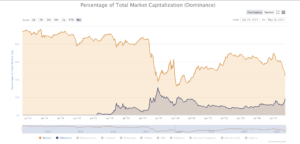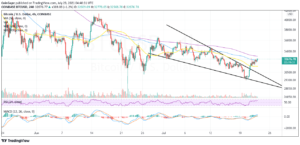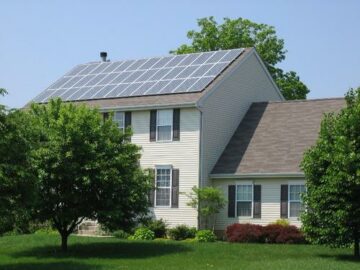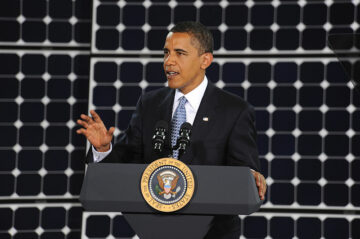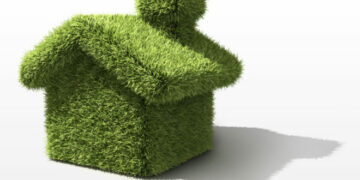
Across the United States, a transformation in the agricultural industry is taking place. As the climate crisis continues, consumers and those interested in environmental causes demand that the farming industry rethink their practices to be more sustainable.
The agricultural industry has taken on that demand and is innovating technology and sustainable methods to be more environmentally friendly. Farmers and ranchers are doing what they can to make the most out of their products.
Those who produce fruits, vegetables, and grains are working on minimizing food waste, reducing the number of fertilizers and pesticides, and making water conservation efforts. Those involved on the livestock side of agriculture are making strides in sustainability, too, by utilizing regenerative farming techniques and, most importantly, technology.
One technology that has long been in the livestock industry is rendering, which uses every part of the animal to reduce waste. Ranchers are improving sustainability in agriculture through rendering technology.
What Is Rendering?
Agricultural rendering involves using as much of an animal as possible. In America, meat industries only use about 50% of an animal for consumer products, specifically meat. However, when an animal is rendered, it reclaims the rest of the meat and animal products like fat and bone for other products.
Rendering essentially recycles nearly all parts of the animal, ensuring that little to none of it goes to waste. In older agricultural times and even before agriculture, humans would use every part of the animal possible. They would eat the meat and then use bones for tools, fat for cooking and the hide to make clothing or form parts of their shelter. Rendering gives back the animal in the form of new, higher-value goods.
In addition to the animal parts, rendering also recycles used cooking oil from restaurants. It transforms the fats and oils into new products, essentially saving them from heading to landfills.
When these new products are created, there are plenty of safety regulations in practice that are of utmost importance. Those who use rendering technology have many quality and safety control systems, which is a very safe practice. Other methods include burial, incineration and composting, which may contribute to pollution if not practiced safely. Livestock already produces pollution through methane, so using techniques to reduce further pollution is more sustainable.
Products That Come from Agricultural Rendering
There are so many products that you may use in your daily life or recognize that come from rendered livestock. The primary four rendered products are fertilizer, pet and animal feed, fuel and oleochemical products. Here are some examples of other rendered products that allow the utilization of 99% of an individual dairy cow:
- Candles
- Paint brushes
- Deodorants
- Gloves and belts
- Wallpaper
- Insulin
- Bone marrow for treating blood disorders
- Antifreeze
- Asphalt
- Butter
- Crayons
- Glue
- Sporting goods
- Vitamin B-12
There are so many other products that come from rendering. If a dairy cow were buried or incinerated, 50% of the animal would go to waste.
How Is Rendering Sustainable?
Agricultural rendering improves sustainability in agriculture. When an animal is rendered, it contributes to less food waste and reclaims water. Additionally, it combats climate change and helps to sustain the economy.
The world has an issue with wasting food. On average, in the United States, about 40% of the total food produced goes to waste. Some of that is due to unrendered products. About 62 billion pounds of raw materials from livestock are cooked and rendered, which results in nearly half of that weight in rendered products.
Without rendering, all of that waste would end up in landfills as food waste. This also combats climate change because it protects the environment from extra greenhouse gases that would otherwise go into the atmosphere if there weren’t rendering technologies.
Rendering also improves sustainability by way of water reclamation. All of the water used in rendering goes through water treatment. Additionally, the moisture that evaporates in rendering is cleaned, too, and is sent back into the environment.
The economy, which is one of the pillars of sustainability, benefits from rendering. Annually, about ten billion dollars go towards the economy because of the rendering industry. Each rendering facility offers about 100 jobs, too.
From Waste to Sustainability
Rendering technology goes above and beyond when it comes to sustainability. It takes sustainability seriously as it recycles unwanted parts of livestock. If it weren’t for rendering, so much more waste would end up in landfills, and the products made as a result of rendering wouldn’t be as readily available.
- 100
- agriculture
- All
- america
- Annually
- Billion
- blood
- change
- Climate change
- climate crisis
- Clothing
- consumer
- Consumer products
- Consumers
- cooking
- crisis
- Demand
- eat
- economy
- Environment
- environmental
- environmentally friendly
- Facility
- farmers
- farming
- food
- form
- Fuel
- goods
- here
- Hide
- HTTPS
- Humans
- industries
- industry
- involved
- IT
- Jobs
- Long
- Making
- Meat
- new products
- NIH
- Offers
- Oil
- oils
- Other
- Plenty
- pounds
- Produced
- Products
- quality
- Raw
- reduce
- regulations
- REST
- Restaurants
- Results
- safe
- Safety
- saving
- Shelter
- So
- States
- Sustainability
- sustainable
- Systems
- Technologies
- Technology
- Transformation
- treating
- treatment
- UN
- United
- United States
- Water
- WHO
- world

